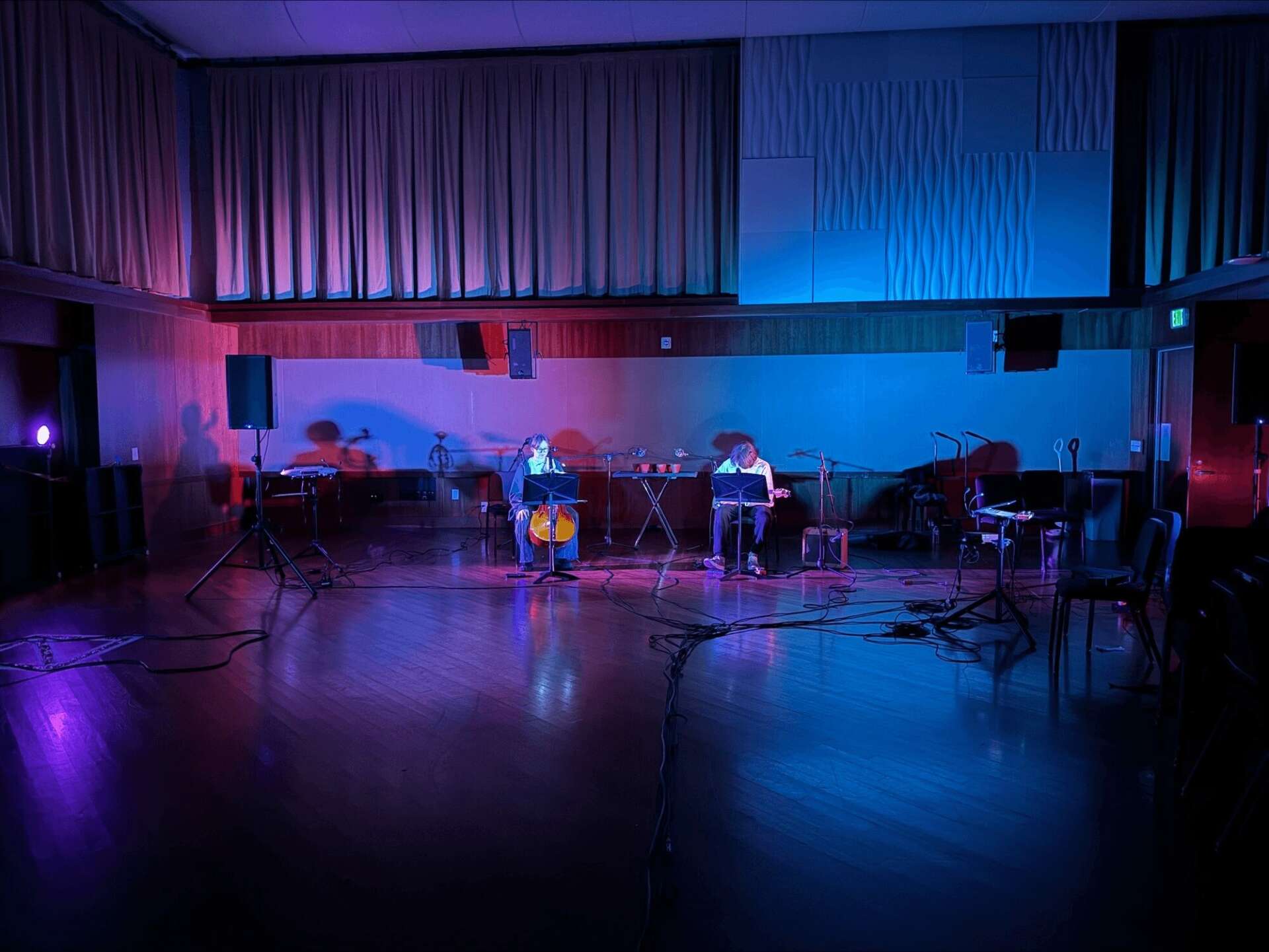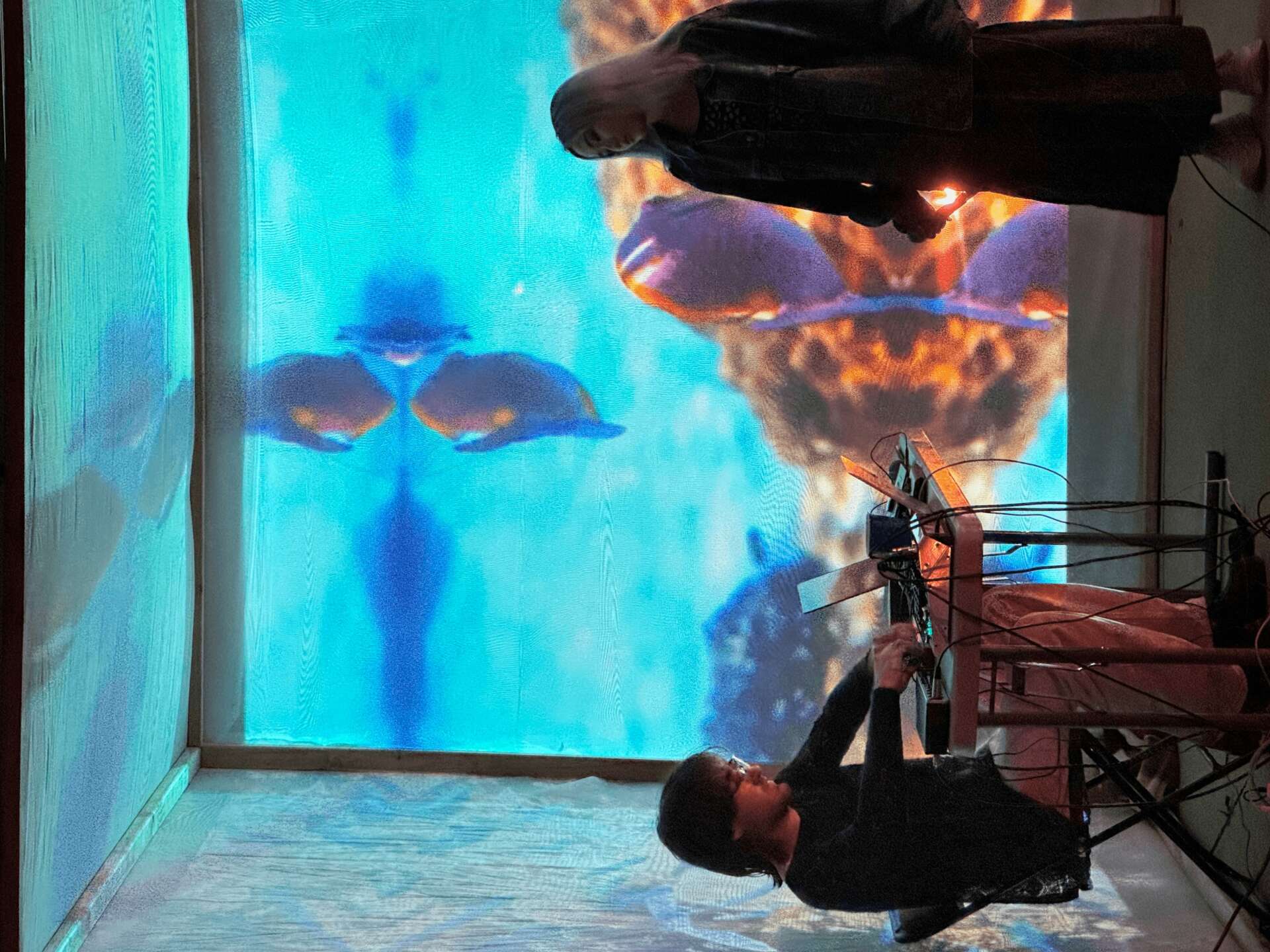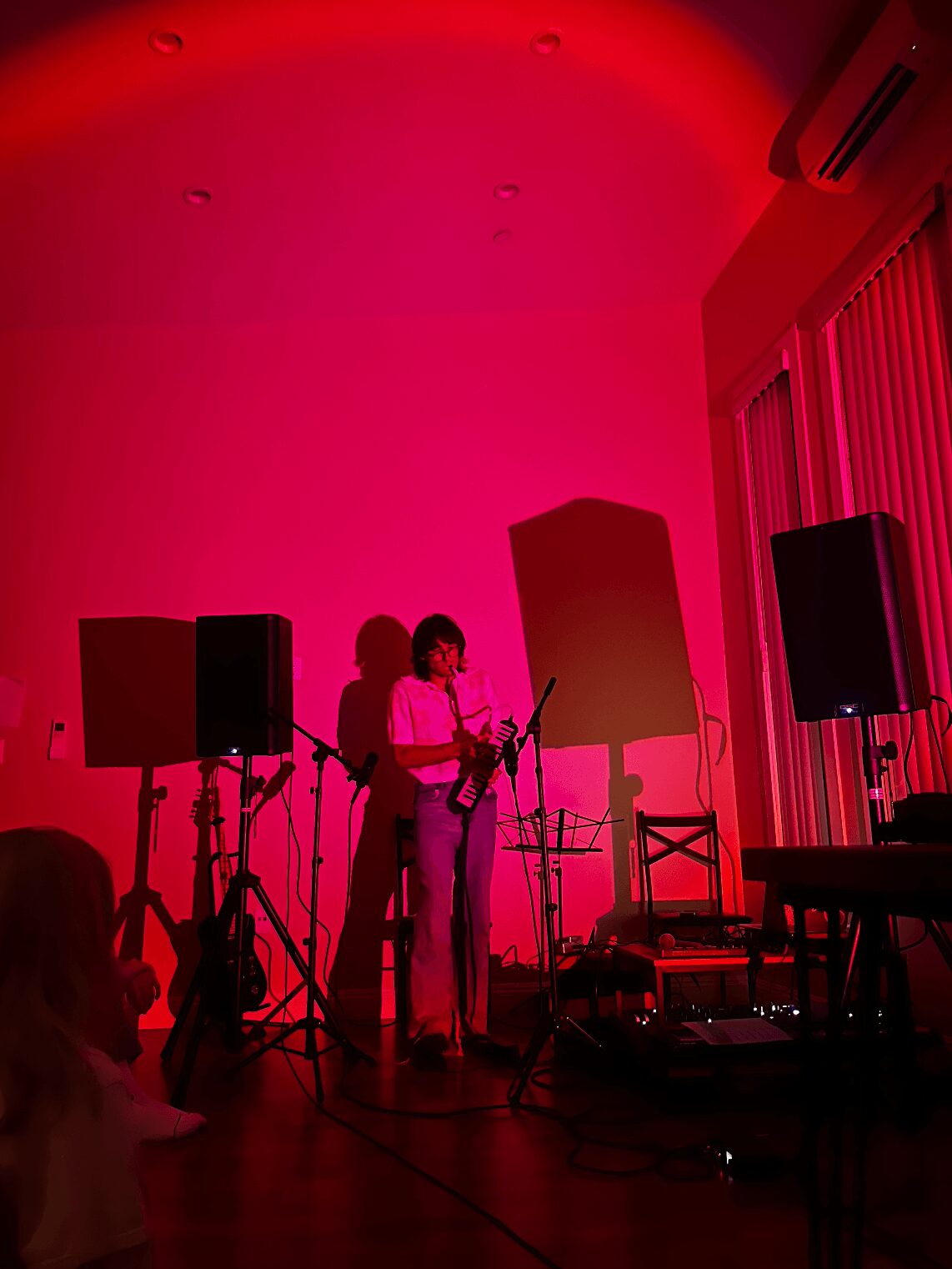Alright – so today we’ve got the honor of introducing you to Charlie Richardson. We think you’ll enjoy our conversation, we’ve shared it below.
Charlie, thanks for taking the time to share your stories with us today What’s been the most meaningful project you’ve worked on?
My favorite creative endeavor thus far is my latest major project, a musical performance titled “Black Sun.” This piece, which blends a chamber ensemble with live electronics, was the culmination of several months of composing, producing, and rehearsing with friends. Its premiere last March at USC’s Electroacoustic Showcase was deeply rewarding for me, offering an ideal platform for my creative vision to materialize.
My favorite creative project so far has to be “Black Sun,” a recent musical performance that blends chamber music with live electronics. I spent months composing, producing, and rehearsing with friends, leading up to the project’s premiere last March at USC’s Electroacoustic Showcase. It was incredibly rewarding to see my creative vision materialize.
I started working on “Black Sun” when I was stuck in quarantine at the beginning of the year after testing positive for Covid. Confined to my bedroom, I rediscovered six small clay flower pots from a previous musical project tucked away in my closet. With all the extra time, I decided to indulge in some experimentation. I spent hours recording as I explored the myriad of sounds that could emerge from these pots, from gentle flicks to scraping my fingernails across them. For me, the ethereal quality of the clay’s resonance evoked imagery of distant, red-shifted light beams. This exploration became the basis for a multi-movement piece, featuring trumpet, violin, cello, electric guitar, and electronics. The final performance included melodies from the flower pot pitches, textures inspired by the clay’s natural resonance, and recorded samples from my initial session. At the end, the performers interact with the clay pots directly, improvising and discovering sound combinations together.
“Black Sun” came from my desire to explore the connections between mental health, current political realities, and the enigmatic concept of black holes. The idea of a black hole, with its gravitational pull trapping even light itself, resonated with me as a symbol of inevitability and powerlessness. Through this project, I wanted to confront personal despondency in the face of bleak political futures, hoping to imagine light within the darkness of a black sun.
I love fusing electronic elements with live performance in my music. Bringing “Black Sun” to life was a team effort with my friends Oliviana, Chloe, Ella, and Evan, all amazing performers and composers. The most rewarding phase of this collaborative process was the transition from solitary composition to communal creation. It served a reminder for me that making music can a source of joy and healing. Creating art with friends helps me externalize internal feelings and transform them into shared expressions of resilience and hope.

Awesome – so before we get into the rest of our questions, can you briefly introduce yourself to our readers.
Hi! My name’s Charlie, and I’m a composer and producer passionate about creating music for live concert experiences. This spans from performing improvised electronic sets at intimate house shows to composing for classical orchestras. Whether it’s heard in a living room or a symphonic hall, I believe in the transformative power of live music, capable of fostering transcendent experiences for both performers and audience members.
Even though my parents aren’t musically inclined, music always played an important role in our family. My brother Jack, who’s four years older than me, has special needs and isn’t able to see or speak. Music has always been a vital aspect of his life, and growing up, it became essential to me as well. I’ve witnessed firsthand how music can transcend barriers of communication and serve as a powerful tool for connection.
My musical journey began at the age of five when I started playing the piano. However, it wasn’t until high school that I seriously considered music as a career path. When I was fifteen or so, I got a MIDI keyboard for my birthday, which unlocked a world of digital music creation. This sparked my interest in electronic composition, and throughout high school, I created numerous electronic pieces on my computer. This creative environment served as a sandbox for free experimentation, allowing me to explore and innovate with few limitations.
Today, my music lies at the intersection between modern classical composition, electronic music, and free improvisation. Each project is an opportunity to explore new concepts and sound worlds. One ongoing project involves collaborating with my friend Chloe to develop a performance series featuring the theremin, which is an early electronic instrument, alongside live digital electronics. In these performances, movement drives the resulting soundscapes, often yielding unpredictable outcomes. For other projects, I look towards natural phenomena for inspiration. For example, I wrote a piece for solo cello that features and deconstructs transcriptions of humpback whale songs. Across all my projects, I’m captivated by the intricacies of sound, exploring the nuances that differentiate sounds and their evolutions over time.
Lately, I’ve really enjoyed collaborating with dancers and choreographers. The combination of dance and music highlights the corporeal experience of sound, which I find really powerful. The dancers I’ve worked with are also incredibly talented and open-minded, which causes me to become totally absorbed in the creative process. I love all kinds of collaboration, so if any creatives are looking to work together on any sort of project, please don’t hesitate to reach out!

What can society do to ensure an environment that’s helpful to artists and creatives?
I think the technological advancements of recent decades have brought both benefits and challenges for artists, but I’m very concerned about the overall lack of protection for creatives. On one hand, the internet has opened up amazing opportunities for artists to connect with niche communities and build fanbases. But on the other hand, it has introduced many complications. Take streaming services, for example—artists often receive only a fraction of the revenue they’re generating. The US doesn’t have much public funding for the arts, so a lot of alternative and experimental artists are left to fend for themselves.
The recent rise of AI in music is a perfect example of the dangers of unregulated technological growth. Musicians’ voices and styles are often used without consent to train machine learning models. In extreme cases, a person’s artistic persona is completely appropriated or stolen for song generation. There’s no consideration for the artists themselves. Cultural traditions and musical histories are being reduced to one-liner text prompts. However, I’m really inspired by artists like Holly Herndon and FKA Twigs, who have reclaimed this process by engaging with machine learning on their own terms. They use AI tools to subvert the AI industry, shedding light on consent and privacy in the digital age.
I think one of the best ways we can all support artists is by recognizing that art is more than just a final product. It represents the diverse lived experiences and creative processes of individuals, and it’s crucial to respect this when engaging with their work. AI undermines this by reducing hours and hours of hard work and collaboration to generic text-based prompts.
I’d also advocate for increased regulation from the US government to protect artists from their music and persona being used without consent, as well as for stronger public funding and institutional support for emerging artists. Knowing our government’s laissez-faire approach though, it’s essential for us to stand in solidarity with one another. We need to collectively acknowledge that music is a process, not just a product, so we can continue to support each other regardless of future technological developments.

Learning and unlearning are both critical parts of growth – can you share a story of a time when you had to unlearn a lesson?
A saying we often hear in art is “less is more.” I think there’s some merit to this idea. As a composer, it’s tempting to inundate your audience with tons and tons of musical information without considering how it all fits together, and this phrase serves as a reminder to avoid that trap. However, I’ve also come to appreciate moments of sensory overload. There’s something beautiful about being completely immersed in a sea of sound, where you can either try to decipher it or simply surrender to its intensity. In my musical practice now, I gravitate towards a balance between minimalism and maximalism—an oscillation between stillness and commotion. Sometimes, in order to achieve the effect I’m going for, more is actually more!
While I can understand the appeal of distilled compositional philosophies like “less is more,” I believe it’s important to maintain a healthy skepticism towards these subjective ideas that are presented as universal truths. It helps to have guiding principles through the creative process, and for some, “less is more” works. However, we have to continuously question whether these concepts truly align with our artistic intentions or merely reflect others’ opinions about art.
Contact Info:
- Website: https://www.charliermusic.com/
- Instagram: https://www.instagram.com/charlie.richardson03/?igshid=YmMyMTA2M2Y%3D
- Youtube: https://youtube.com/@charlierichardson9345?feature=shared




